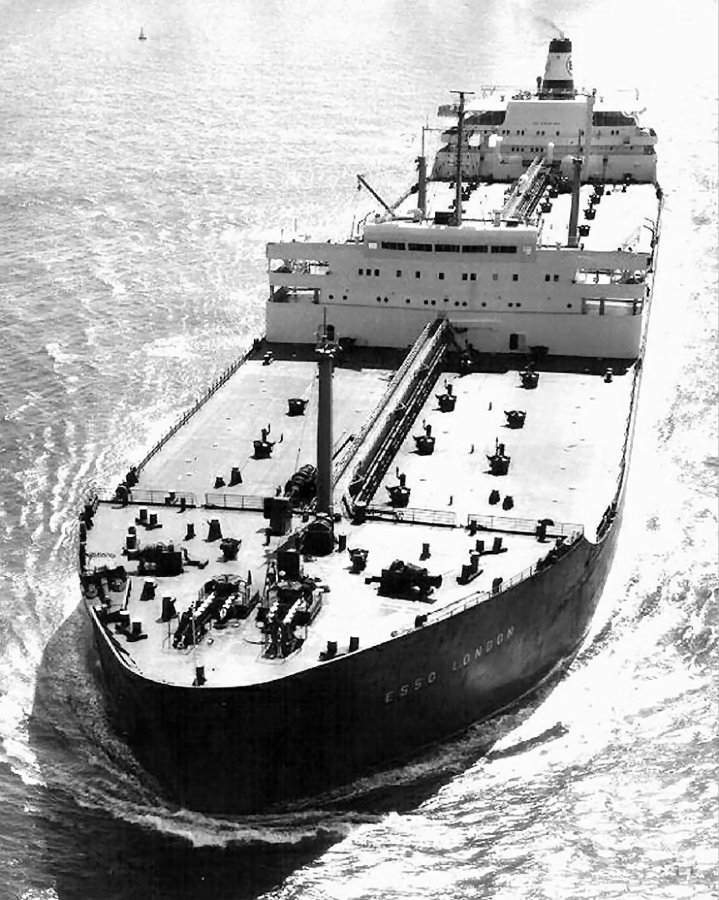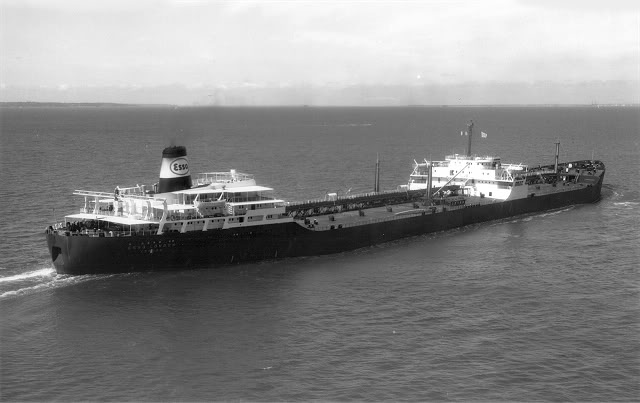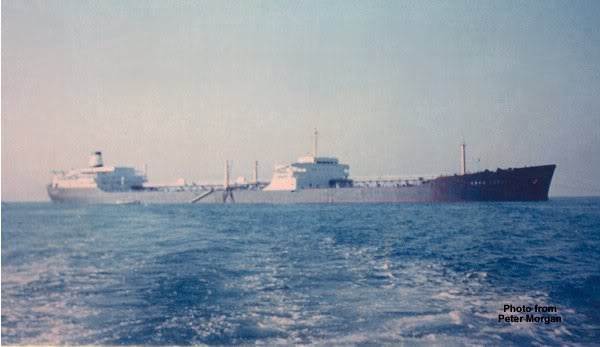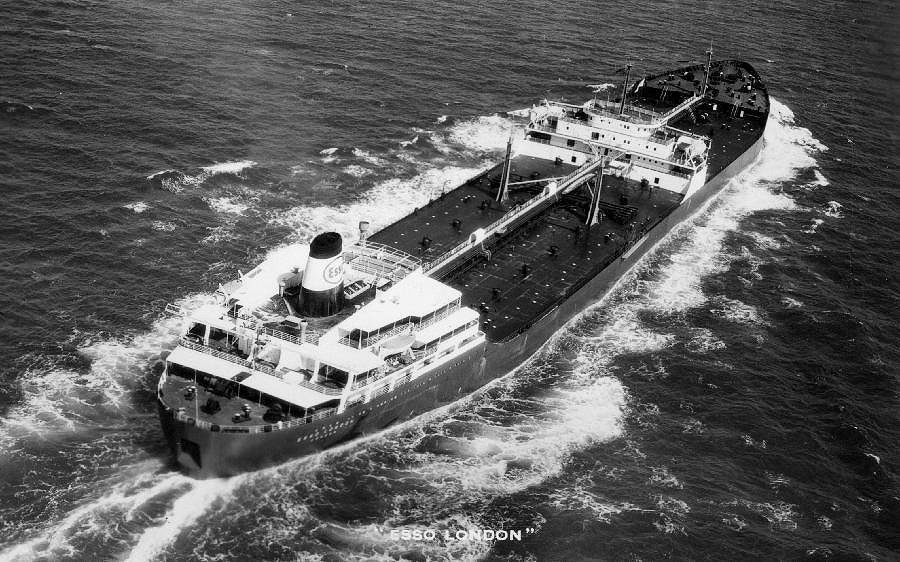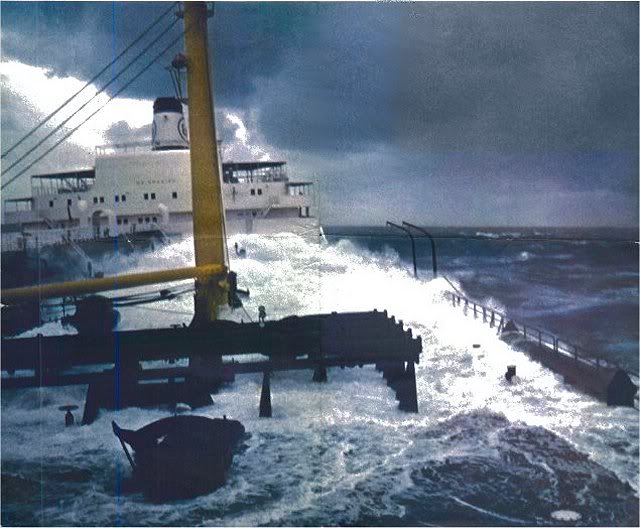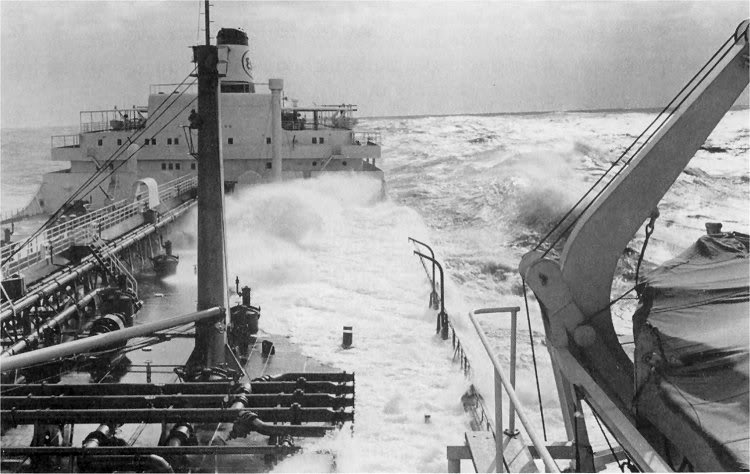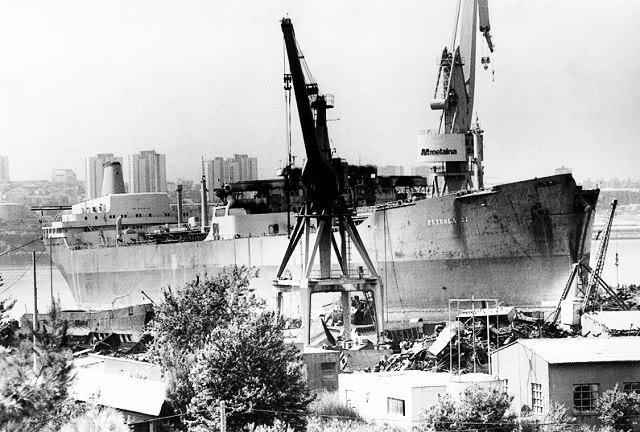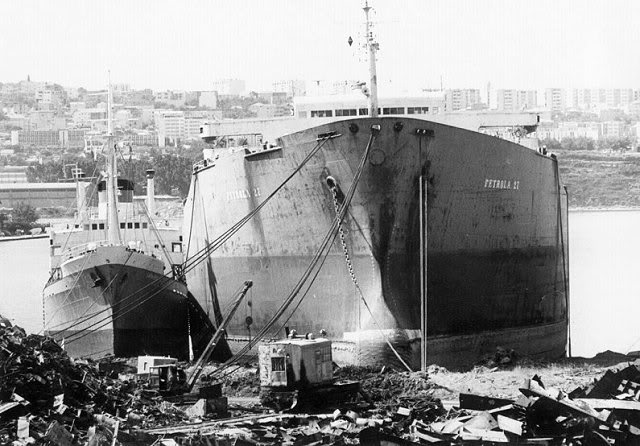Auke Visser´s Esso UK Tanker's site | home
Esso London (2) - (1964-1975)
See also : Video film of the launch of the "Esso London (2)" in 1964 & Petrola 27 ex. Esso London (2)
The second "Esso London" build in 1964. Sold in 1975 as "Petrola XXVII", renamed in 1976 as "Petrola 27".
Arrived 1.6.1782 Split for breaking up.
( Photo by Kreol )
"Esso London".
Additional information :
ESSO LONDON (2) - 1964
Built at A.G. Weser Bremen (1340) as ESSO LONDON for Esso Petroleum Co.Ltd. London
Measurements 262.5 / 249.9 / 38.2
Tanker,1 DR Steamturbines, Speed 17 knots.
53342 GRT, 94512 DWT
1975 PETROLA XXVII (Apollon Sg & Tdg Corp - GR)
1976 PETROLA 27 (s/o)
Scrapped at Brodospas, Split : Arrived 1 June 1982.
The Miramar Ship Index for "ESSO LONDON"
IDNo:
|
6401725
|
Year:
|
1964
|
Name:
|
ESSO LONDON
|
Keel:
|
|
Type:
|
Tanker
|
Launch Date:
|
|
Flag:
|
GBR
|
Date of completion:
|
02.1964
|
Tons
|
53342
|
Link:
|
-
|
DWT:
|
94512
|
Yard No:
|
1340
|
Length overall:
|
262.5
|
Ship Design:
|
|
LPP:
|
249.9
|
Country of build:
|
DEU
|
Beam:
|
38.2
|
Builder:
|
Weser
|
Material of build:
|
Location of yard:
|
Bremen
|
|
Number of screws/Mchy/Speed(kn):
|
1ST-17
|
||
Subsequent History:
1975 PETROLA XXVII - 1976 PETROLA 27
Disposal Data:
Scrapped at Split 01.06.1982. ( By Brodospass )
History:
IMO
|
LR/IMO
|
ID
|
Year
|
Name
|
Tons
|
Change
|
Owner
|
6401725
|
6401725
|
1964
|
ESSO LONDON
|
53342
|
Esso Petroleum Co., Ltd.
|
||
6401725
|
6401725
|
1964
|
PETROLA XXVII
|
53342
|
1975
|
Apollon Sg & Tdg Corp.
|
|
6401725
|
6401725
|
1964
|
PETROLA 27
|
53342
|
1976
|
Apollon Sg & Tdg Corp.
|
"Esso London".
( Photo collection Peter Morgan )
"Esso London".
Afternoon- 14th October.
The 90,173 deadweight ton "Esso London", flagship of the Company's tanker fleet, beats her way through a Force
10 gale in the Bay of Biscay. She was carrying crude oil from the Middle East to the refinery at Milford Haven.
( Thanks to Stephen Nott )
The "Esso London" beats her way through a Force 10 gale in the Bay of Biscay in March, 1965.
( Esso photo )
"Petrola 27", ex. "Esso London (2)", record breaking tanker at scrapyard at Sveti Kajo, Split.
On June 8, 1982 she arrived Sveti Kajo, Split, from Eleusis in tow of tug PETROLA'S SEAMASTER 20
( Photo thanks to Marijan Žuvic )
David & Goliath: PETROLA 27 with liner SARAJEVO moored on her starboard.
( Photo thanks to Marijan Žuvic )
In 1962 the “Esso Durham”, one of the “City” class of 36,000 tankers and launched in 1957, underwent unusual ship surgery
and was fitted with a new and larger midship section, so increasing her length by 40 feet to 730 feet and her deadweight to
38.060 tons. At the same time her midships bridge and accommodation wore moved aft. This vessel, powered by turbines,
has a breadth of 90 feet. Later a further three ships were obtained; two from Kockums of Malmo being the 30,000 ton dwt.
“Esso Lancashire” and the 90,000-ton dwt “Esso Yorkshire”, whilst the remaining vessel “Esso Hampshire” of 80.000 tons
came from the Verolme shipyard in Rotterdam.
The 80,000-ton class has dimensions of 856 feet by 112,5 feet with a draught of 47,5 feet, whilst the 90,000 tonners are of similar
size but have a breadth of 125 feet. Such draught was over the limits of the Fawley refinery and the ships were therefore restricted
originally to Milford Haven. Later the approaches to Fawley were dredged, so allowing the deep-draught vessels to use the terminal.
These ships are propelled by steam turbines developing some 24,000 shp and giving a speed in excess of 17 knots.
When “Esso Yorkshire”, the fifth of six “County” class ships was delivered in December 1963 she formed a new Kockums
shipbuilding record. Soon after, her German builders delivered Esso's largest ship and new flagship. This
was “Esso London”, similar to the “Yorkshire” but with deadweight of 90,200 tons and she was the last of the then current
building programme. But at the same time tankers of nearly twice this size were under consideration and in August 1965 the
Paso Group announced the order for such vessels. One, a turbine ship of 171,000 tons dwt on dimensions of 1.040 feet
by 155 feet was ordered from Kieler Howaldtswerke and is for delivery late in 1967. Within months this was
supplemented by further orders for similar vessels from the same builders, whilst later morn were ordered from a French yard.
Subsequent orders included three 190,000 tonners from the Howaldtswerke shipyard.
The 171,000 tonners are of all-aft design with flush deck and long forecastle, their vast length being broken only by two midship
derrick posts, a short tripod mast and some deck shelters at intervals. The most radical change will be in the tank space, for
instead of many comparatively small tanks (“Esso Pembrokeshire” has 13 sets of three) these ships only have only live sets
of three, the largest tank of which will have a capacity of 26,000 tons-equal to the total dwt tonnage of the first ships
in the post-war building programme.
